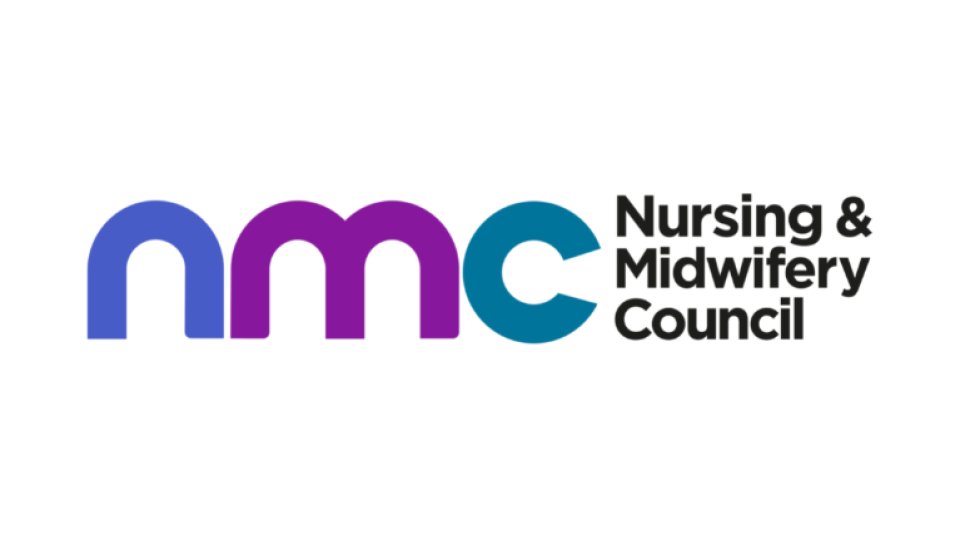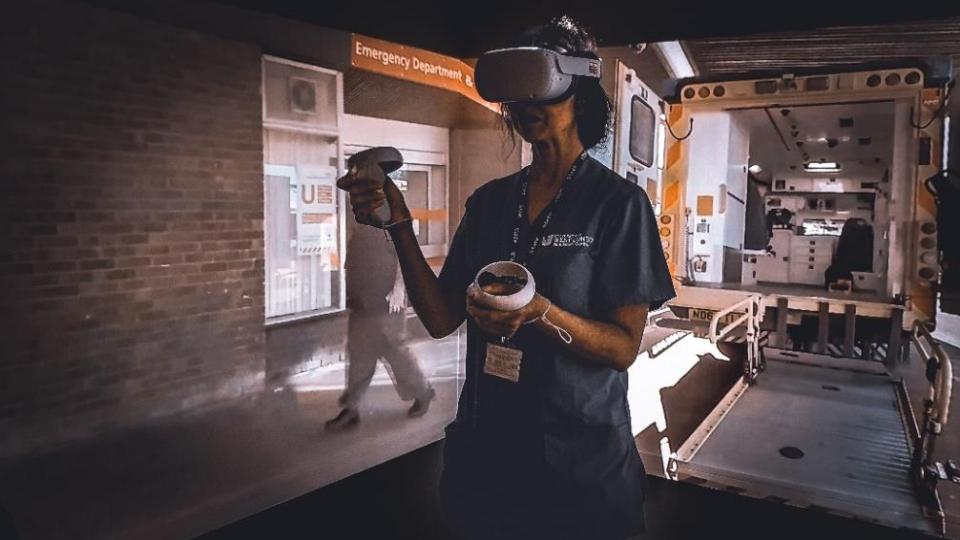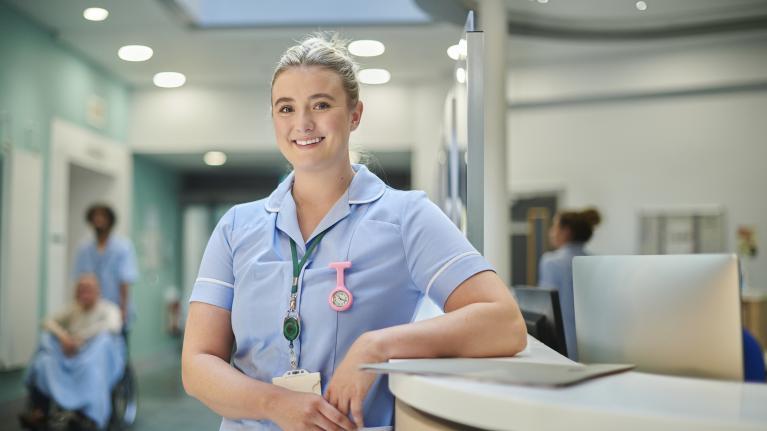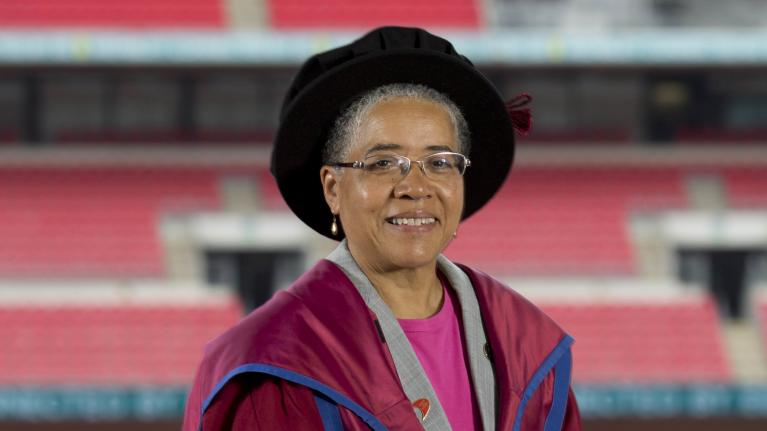
Simulation in practice: developing the next generation of nurses
intro
The Nursing and Midwifery Council (NMC) recently approved changes that will give educators the flexibility to provide innovative simulated practice learning methods for some of the hours students need. The College of Nursing, Midwifery and Healthcare at the University of West London is already making the most of Virtual Reality (VR) software.
Main body
Aby Mitchell, Professional Lead for Simulation and Immersive Technologies at UWL, said:
Virtual Reality offers a variety of scenarios that students can use to refine their nursing practice. After putting on their VR headsets, students will feel as though they’ve walked into a clinical room setting."
UWL also has two immersive rooms that can depict any situation, from a hospital environment to a motorway emergency. It’s just one of the universities using increasingly sophisticated simulation methods to build students’ confidence and skills in situations they may not encounter frequently in real-world practice learning.
Giving an example of the university’s virtual reality facilities, Aby continues:
A virtual clinician will provide students with a handover, including a brief explanation of who the service user is and their symptoms. Students are then left to assess their virtual patient. For instance, it could include an A to E assessment (Airway, Breathing, Circulation, Disability, Exposure) or mental health assessment. They can also request x-rays and blood tests.
Students must complete a NEWS score (National Early Warning Score) as part of the assessment. And if they're unsure at any point, they can phone the simulation's nurse on call who will offer some guidance. Students receive a full analytical breakdown at the end of each scenario, accompanied by group discussions with their supervisor and peers to understand what went well and what to improve on going forward."
Aby’s example highlights the way in which simulated practice is helping students develop their knowledge and skills through repetition, feedback, evaluation and reflection.
During the Covid-19 pandemic, the Nursing and Midwifery Council (NMC) introduced emergency standards allowing universities to deliver a proportion of practice learning through simulation. Throughout this turbulent period, the standard allowed universities to continue providing high-quality and effective nursing education for the next generation of nurses and nursing associates.
Now the NMC’s governing body – the Council itself – has agreed to make this standard permanent. As part of the NMC’s revised education programme standards, universities will be able to deliver their increasingly innovative simulated practice learning for 600 of the 2,300 practice learning hours nursing students need.
This new allowance follows months of research and collaboration between the NMC and educators, students, and experts. It’s part of a package of standards changes that will give educators the flexibility to deliver courses at the cutting edge of nursing and midwifery education.
Sophie Nanney, a third-year mental health student at UWL, said:
It’s great the NMC is increasing the allowance for simulated practice learning. This offers us opportunities to learn best practice and the science behind clinical procedures, therefore enhancing the quality of care we provide. Simulated practice learning improves our confidence and understanding of clinical practice so we can effectively communicate with those in our care. It supports us to discuss clinical procedures with them, including what they can expect, listening to their concerns and addressing any anxieties. This increases their confidence in us as nurses and helps us develop as professionals.”
While simulation offers exciting opportunities to use increasingly sophisticated technology, Sophie reminds us that people remain very much at the heart of everything nurses do:
The actors we use as part of our simulation-based learning are actually service users,” she says. “They’re amazing and their feedback is vital. As students, we really value these opportunities to learn about their experiences and how we can improve the care we provide.”
Alongside the increased allowance for simulated practice learning, the NMC is giving universities more flexibility to set their own robust entry requirements. The NMC is also removing EU stipulations about the settings in which nursing and midwifery practice placements must take place. This will allow students to do all their practice learning in the settings most relevant to them.
All these changes will come into effect from September 2023. The NMC is confident they will help to make the UK a world leader in nursing and midwifery education, supporting new generations of nurses, midwives and nursing associates to deliver safe, effective and kind care for people with changing and increasingly complex needs in the years ahead.
- Learn more about UWL’s College of Nursing, Midwifery and Healthcare.
- Read more about the Nursing and Midwifery Council
- Read the NMC blog: 'We’re making changes to our pre-registration education programme standards'.
College of Nursing, Midwifery and Healthcare
The College of Nursing, Midwifery and Healthcare is a major provider of pre- and post-registration courses in West London and Berkshire.
Related news
-
Emeritus nursing professor honoured with Lifetime Achievement Award
Dame Elizabeth Anionwu – the University of West London’s inspiring Emeritus Professor of Nursing – has been honoured with a Lifetime Achievement Award after dedicating her career to transforming care for people with sickle cell disease.
-
Inspiring UWL students up for national nursing awards
Inspiring nursing and midwifery students from the University of West London (UWL) are in the running to be crowned best in the country in this year’s Student Nursing Times Awards.
-
Graduate midwife named UWL’s first award winner
Determined she wanted to improve care for new mothers at the age of just 14, a University of West London (UWL) midwife has been named as the first graduate award winner of the year.






